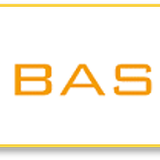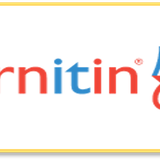Identification Of Leading Sectors In Batam: LQ, DLQ, and Shift-Share Analysis
DOI:
https://doi.org/10.24912/je.v28i2.1634Abstract
The purpose of this research is to find out which sector is the leading sector in Batam. This research uses LQ, DLQ, and Shift-share Analysis. LQ analysis shows that Processing Industry, Electricity and Gas Procurement, Water Supply, Waste Management, Waste and Recycling, Construction, Transportation and Warehousing, Accommodation, Drinking, and Food Provision, Information and Communication, and Financial and Insurance Services can fulfill domestic needs in Batam and export products from these sectors to other regions. Using DLQ, it is found that Agriculture, Forestry, and Fisheries have the potential for rapid growth and development. Using shift-share, Processing Industry, Construction, Information and Communication, and Financial and Insurance Services have rapid growth rates, good competitiveness, and are progressive. Based on these findings, it is expected that the Batam Government and the Head of BP Batam can focus development on these leading sectors, in order to drive economic growth.
References
Aji, M. M. S., and Nasriyah, N. (2021). Sektor Unggulan di Era Pandemi Covid 19 Wilayah Regional Sumatera. https://doi.org/10.31219/osf.io/bjgrm.
Aritenang, A. F. (2017). Special economic zone at the crossroads: The Case Of Batam. Jurnal Ilmu Sosial Dan Ilmu Politik, 21(2), 132–146.
Badan Karantina Pertanian. (2023). https://karantina.pertanian.go.id/berita-1616-kementan-upayakan-sistem-subkompartemen-untuk-buka-kembali-ekspor-ternak-babi-ke-singapura.html.
Badan Pusat Statistik Provinsi Kepulauan Riau. (n.d.). Retrieved May 27, 2023, from https://kepri.bps.go.id/site/resultTab.
Barenbang. (2020). Survei Kemnaker: 88 Persen Perusahaan Terdampak Pandemi Covid-19 : Berita : Kementerian Ketenagakerjaan RI. https://kemnaker.go.id/news/detail/survei-kemnaker-88-persen-perusahaan-terdampak-pandemi-covid-19.
Basuki, M. (2017). Analisis Sektor Unggulan Kabupaten Sleman dengan Metode Shift Share dan Location Quotient. SITEKIN: Jurnal Sains, Teknologi dan Industri, 15(1), Article 1. https://doi.org/10.24014/sitekin.v15i1.4438.
BPS. (n.d.). Kamus Pembakuan Statistik. Retrieved July 8, 2023, from https://www.bps.go.id/klasifikasi/app/kbli#kbli2020.
BPS Kota Batam. (n.d.). Retrieved May 27, 2023, from https://batamkota.bps.go.id/site/resultTab.
Hutchinson, F. E. (2017). Rowing against the tide? Batam’s economic fortunes in Today’s Indonesia. ISEAS Publishing.
Justyanita, J., Septiana, S., Septiawant, B., and Thai, M. (2021). Analisis Pendapatan Kota Batam Tahun 2018—2020 Melalui APBD dan PDRB. Jurnal Sosial Teknologi, 1(5), 428–436. https://doi.org/10.59188/jurnalsostech.v1i5.101.
KEPRI, D. (2023). Mencapai 5,09 Persen di Tahun 2022, Pertumbuhan Tertinggi Ekonomi di Kepri di 7 Tahun Terakhir. Portal Pemprov Kepri. https://kepriprov.go.id/berita/pemprov-kepri/mencapai-5-09-persen-di-tahun-2022-pertumbuhan-tertinggi-ekonomi-di-kepri-di-7-tahun-terakhir.
Kurniawan, B. (2017). Analisis Sektor Ekonomi Unggulan Kabupaten Kerinci Provinsi Jambi. El-Jizya : Jurnal Ekonomi Islam, 4(1), 1–26. https://doi.org/10.24090/ej.v4i1.2016.pp1-26.
Mardiyah, A., Fitrawaty, F., and Munajat, M. (2022). Analysis of Leading Commodities on The Sumatra Island. Proceedings of the 4th International Conference on Innovation in Education, Science and Culture, ICIESC 2022, 11 October 2022, Medan, Indonesia. Proceedings of the 4th International Conference on Innovation in Education, Science and Culture, ICIESC 2022, 11 October 2022, Medan, Indonesia, Medan, Indonesia. https://doi.org/10.4108/eai.11-10-2022.2325297.
Misbah, A., Mulyo, J. H., and Darwanto, D. H. (2019). Leading Commodities of Livestock Subsector in Riau Islands Province. Agro Ekonomi, 29(2), 185. https://doi.org/10.22146/ae.35709.
Muljanto, M. A. (2021). Analisis Sektor Unggulan Dalam Pembangunan Daerah di Kabupaten Sidoarjo. Jurnal Manajemen Keuangan Publik, 5(2), 169–181. https://doi.org/10.31092/jmkp.v5i2.1386.
Napitupulu, B. K., and Nugroho, P. (2016). Pengaruh Aktivitas Industri terhadap Peningkatan Ekonomi Penduduk dan Perkembangan Perdagangan Jasa di Kota Batam. Teknik PWK (Perencanaan Wilayah Kota), 5(1), Article 1. https://doi.org/10.14710/tpwk.2016.10619.
Negara, S. D., and Hutchinson, F. (2020). Batam: Life after the FTZ? Bulletin of Indonesian Economic Studies, 56(1), 87–125.
Poinsot, P., and Ruault, J.-F. (2019). Economic-Base Theory And Highly-Open Economies: Incorporating Day-To-Day Mobility.
Purnomo, R. A., Malynka, O., and Prananto, A. (2023). Sustainable Business Development Via Applying an Online Business Model for Gaining Benefit in Economics, Education, and Social Network. Ekuilibrium : Jurnal Ilmiah Bidang Ilmu Ekonomi, 18(1), 1–10. https://doi.org/10.24269/ekuilibrium.v18i1.2023.pp1-10.
Wira, W., Arianto, B., Adhayanto, O., Sucipta, P. R., Nurhasanah, Astono, P., Wulandari, S. N., and Adiwijaya, Z. (2023). Maritime Potential Optimization in the Riau Islands Province. IOP Conference Series: Earth and Environmental Science, 1148(1), 012036. https://doi.org/10.1088/1755-1315/1148/1/012036.
Downloads
Published
How to Cite
Issue
Section
License
Copyright (c) 2023 Jurnal Ekonomi

This work is licensed under a Creative Commons Attribution-NonCommercial-ShareAlike 4.0 International License.
This journal provides immediate open access to its content on the principle that making research freely available to the public supports a greater global exchange of knowledge.

This work is licensed under a Creative Commons Attribution-NonCommercial-ShareAlike 4.0 International License.
Similar Articles
- Usman Mustofa, Agung Dharmawan Buchdadi, Umi Widyastuti, Faktor-Faktor Yang Mempengaruhi Kinerja Keuangan Dengan Environmental Performnace Sebagai Variabel Intervening , Jurnal Ekonomi: Vol. 28 No. 2 (2023): July 2023
You may also start an advanced similarity search for this article.


















